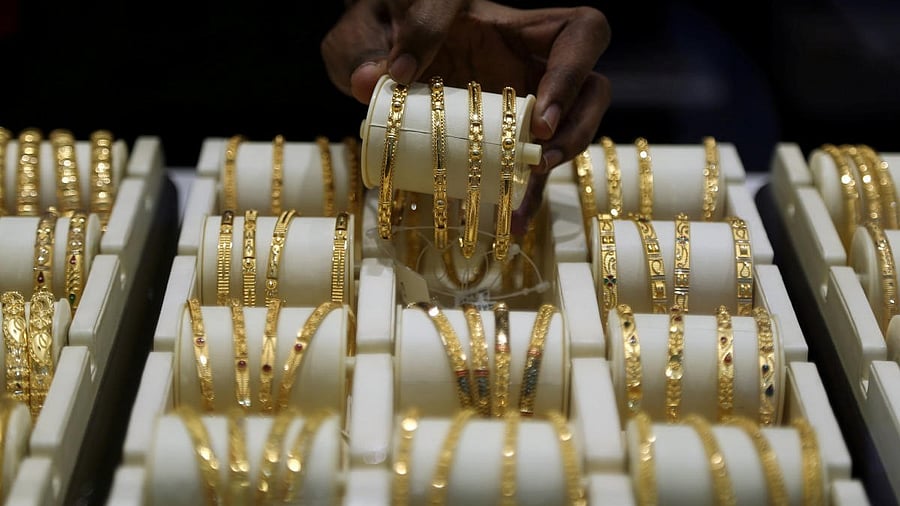
Representative image for gold.
Credit: Reuters Photo
Thanks to its attributes like scarcity and permanence, gold has always served as a hedge during episodes of high inflation, economic uncertainty, or geopolitical instability in the global financial system.
As 2025 is marked by continued geopolitical stresses, tariff uncertainty, a declining US dollar (the dollar index has declined by 10.3% in CY2025 so far), and concerns about the US Federal Reserve’s autonomy, the demand for gold has been rising at an accelerated pace. In fact, the ongoing increase in gold prices has come as part of a multiyear rally for precious metals since COVID-19, in 2020. Central banks across the world have stepped up their gold purchases for the fourth year in a row. Their aggressive purchases of gold reflect active efforts to reduce reliance on the USD.
The gold rush
A survey of 73 central banks conducted by the World Gold Council revealed that 95% of them are expected to increase their gold holdings over the next 12 months, while nearly three-quarters of them are anticipated to shrink their USD reserves. Emerging market central banks, especially China, Russia, India, Türkiye, and Poland, have been the most aggressive gold buyers in recent years.
The central banks’ aggressive purchases of gold have fundamentally impacted the supply-demand dynamics in the global gold market and put substantial upward pressure on gold prices. In the current calendar year, the global gold price has increased by 44.3% from $2,606.24 per ounce as of December 30, 2024, to $3,759.86 per ounce as of September 26, 2025.
A rise in gold price will have a differential impact on a nation’s macro-financial stability, depending on whether it is a net exporter or importer of gold.
High imports
India does not produce much gold, and depends heavily on imports. Moreover, India has a deep cultural affinity to gold. For a large proportion of the population, gold is an essential part of celebrations and religious ceremonies, and, also, a traditional store of wealth. Therefore, during the festival or wedding seasons, there is a natural rise in the demand for gold, putting upward pressure on domestic gold prices.
India imports about 70-80% of its gold consumption. The annual gold import bill has surged from $28 billion in 2019-2020 to $58 billion in 2024-2025. The high value of gold imports tends to widen India’s trade deficit, and puts pressure on the INR.
To control the rise in gold imports, the Union government had introduced new restrictions on gold imports earlier in 2025. These measures, combined with the high international price of gold, led to a significant decline in gold imports in the months of May and June. However, gold imports have started surging again ahead of the festive and wedding seasons from July onwards.
The gold imports reached a nine-month high in August (at $5.44 billion) and marked the second consecutive month of high imports. As a result, India’s trade deficit widened to $27.4 billion in August, compared to $19 billion in June, and $26.5 billion in July.
Rupee under pressure
Even the rupee-dollar exchange rate depreciated from 85.90 in June to 88.28 in September (until the 26th). The latest foreign exchange reserve (FER) position of the RBI shows that on September 19, India had a total FER of $702.57 billion, of which $92.78 billion was in gold stock. Exactly a year ago, it had a total FER of $692.30 billion, of which $63.61 billion was held as gold stock. Aggressive gold purchases by the RBI, combined with higher consumption demand as well as investment demand, have been putting the INR under pressure, apart from the usual pressure from oil imports.
While the government will try to control the negative economic effects of high gold demand by implementing policies to shift investor preferences from physical gold to financial gold assets or by imposing restrictions on imports, the scale of gold purchases by global central banks signals preparation for a monetary system that gives greater prominence to gold in the basket of reserve assets.
This new wave affirms gold’s continued relevance in the modern financial system. Gold is here to stay, and will stay strong for the foreseeable future.
Rupa Rege Nitsure, an independent economist, is Professor of Practice, Symbiosis School of Economics. Views are personal.
Disclaimer: The views expressed above are the author's own. They do not necessarily reflect the views of DH.